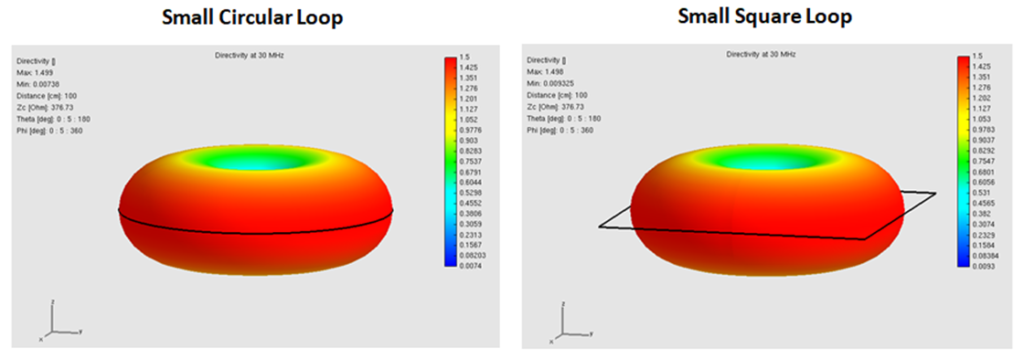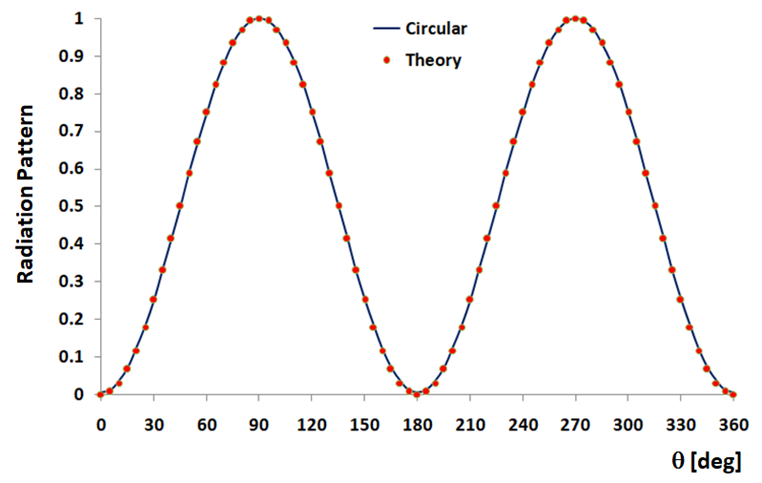Search for answers or browse our Knowledge Base.
Guides | Models | Validation | Blog
-
Guides
-
-
- Evaluating EMF Compliance - Part 2: Using Near-Field Calculations to Determine Exclusion Zones
- Beyond Analytical Formulas: Accurate Coil Inductance Calculation with AN-SOF
- Complete Workflow: Modeling, Feeding, and Tuning a 20m Band Dipole Antenna
- DIY Helix High Gain Directional Antenna: From Simulation to 3D Printing
- Evaluating EMF Compliance - Part 1: A Guide to Far-Field RF Exposure Assessments
- Design Guidelines for Skeleton Slot Antennas: A Simulation-Driven Approach
- Simplified Modeling for Microstrip Antennas on Ungrounded Dielectric Substrates: Accuracy Meets Simplicity
- Fast Modeling of a Monopole Supported by a Broadcast Tower
- Linking Log-Periodic Antenna Elements Using Transmission Lines
- Wave Matching Coefficient: Defining the Practical Near-Far Field Boundary
- AN-SOF Mastery: Adding Elevated Radials Quickly
- Enhancing Antenna Design: Project Merging in AN-SOF
- On the Modeling of Radio Masts
- The Equivalent Circuit of a Balun
- AN-SOF Antenna Simulation Best Practices: Checking and Correcting Model Errors
-
-
- AN-SOF 9.50 Release: Streamlining Polarization, Geometry, and EMF Calculations
- AN-SOF 9: Taking Antenna Design Further with New Feeder and Tuner Calculators
- AN-SOF Antenna Simulation Software - Version 8.90 Release Notes
- AN-SOF 8.70: Enhancing Your Antenna Design Journey
- Introducing AN-SOF 8.50: Enhanced Antenna Design & Simulation Software
- Get Ready for the Next Level of Antenna Design: AN-SOF 8.50 is Coming Soon!
- Explore the Cutting-Edge World of AN-SOF Antenna Simulation Software!
- Upgrade to AN-SOF 8.20 - Unleash Your Potential
- AN-SOF 8: Elevating Antenna Simulation to the Next Level
- New Release: AN-SOF 7.90
- AN-SOF 7.80 is ready!
- New AN-SOF User Guide
- New Release: AN-SOF 7.50
- AN-SOF 7.20 is ready!
- New Release :: AN-SOF 7.10 ::
- AN-SOF 7.0 is Here!
- New Release :: AN-SOF 6.40 ::
- New Release :: AN-SOF 6.20 ::
- Show All Articles (3) Collapse Articles
-
-
-
-
Models
-
- Download Examples
- Modeling a Center-Fed Cylindrical Antenna with AN-SOF
- Yagi-Uda Array
- Monopole Over Real Ground
- Helix Antenna in Axial Mode
- Modeling a Circular Loop Antenna in AN-SOF: A Step-by-Step Guide
- A Transmission Line
- An RLC Circuit
- Explore 5 Antenna Models with Less Than 50 Segments in AN-SOF Trial Version
-
- Modeling a Super J-Pole: A Look Inside a 5-Element Collinear Antenna
- Simulating the Ingenious Multiband Omnidirectional Dipole Antenna Design
- The Loop on Ground (LoG): A Compact Receiving Antenna with Directional Capabilities
- Precision Simulations with AN-SOF for Magnetic Loop Antennas
- Advantages of AN-SOF for Simulating 433 MHz Spring Helical Antennas for ISM & LoRa Applications
- Radio Mast Above Wire Screen
- Square Loop Antenna
- Receiving Loop Antenna
- Monopole Above Earth Ground
- Top-Loaded Short Monopole
- Half-Wave Dipole
- Folded Dipole
- Dipole Antenna
- The 5-in-1 J-Pole Antenna Solution for Multiband Communications
-
- The Lazy-H Antenna: A 10-Meter Band Design Guide
- Extended Double Zepp (EDZ): A Phased Array Solution for Directional Antenna Applications
- Transmission Line Feeding for Antennas: The Four-Square Array
- Log-Periodic Christmas Tree
- Enhancing VHF Performance: The Dual Reflector Moxon Antenna for 145 MHz
- Building a Compact High-Performance UHF Array with AN-SOF: A 4-Element Biquad Design
- Building a Beam: Modeling a 5-Element 2m Band Quad Array
- Broadside Dipole Array
- Log-Periodic Dipole Array
- Broadband Directional Antenna
- A Closer Look at the HF Skeleton Slot Antenna
- The 17m Band 2-Element Delta Loop Beam: A Compact, High-Gain Antenna for DX Enthusiasts
- Enhancing Satellite Links: The Moxon-Yagi Dual Band VHF/UHF Antenna
-
-
Validation
-
-
- Simple Dual Band Vertical Dipole for the 2m and 70cm Bands
- Linear Antenna Theory: Historical Approximations and Numerical Validation
- Validating Panel RBS Antenna with Dipole Radiators against IEC 62232
- Directivity of V Antennas
- Enhanced Methodology for Monopoles Above Radial Wire Ground Screens
- Dipole Gain and Radiation Resistance
- Convergence of the Dipole Input Impedance
- Validating Dipole Antenna Simulations: A Comparative Study with King-Middleton
-
Radiation Resistance and Directivity of Small Loops
Among the advantages of the Conformal Method of Moments (CMoM) > implemented in AN-SOF is the ability to model exactly the contour of curved antennas. Besides, calculations at extremely low frequencies are possible or, equivalently, when the antenna size is a tiny fraction of a wavelength. Both advantages will be demonstrated in this article for the small loop antenna.
One theoretical prediction for loop antennas whose size is much smaller than the wavelength is that the radiation resistance, Rr, is independent of the loop shape and it only depends on its area, A, measured in square wavelengths, λ2, as follows:

This equation must be interpreted as the limit of the radiation resistance when the loop size tends to zero. To get this equation it is also assumed that the current distribution along the loop circumference is uniform.
The computed radiation resistances of small circular and square loops are plotted in Fig. 1 as a function of frequency, as well as the theoretical prediction. Both loops have an area of 0.01 m2 (square loop: 0.1 m x 0.1 m; circular loop: 0.05642 m in radius). For instance, the wavelength is λ = 3 m at 100 MHz, so the normalized loop area is A/λ2 = 0.0011. As the frequency increases, the theoretical prediction departs from the simulation results because it is no longer valid.

Another theoretical prediction for small loops is that the directivity becomes independent of the loop size and even of frequency. The peak directivity is a contact, 3/2, the radiation pattern is doughnut-shaped and it has exactly the same expression as for a Hertzian dipole, namely,

This equation must also be considered as a limiting case when the loop size measured in wavelength tends to zero. This can be seen in Fig. 2, where the peak directivity is represented as a function of frequency for the small circular and square loops simulated with AN-SOF, the horizontal asymptote being the theoretical result.

Fig. 3 shows the computed radiation patterns of the small circular and square loops at 30 MHz, and Fig. 4 shows a vertical slice of the patterns represented in a Cartesian chart. Only the radiation pattern for the circular loop is plotted in Fig 4 since the square loop results are so close to it that the difference cannot be seen with the naked eye.


These calculated results and the comparison with the asymptotic expressions predicted by theory demonstrate the ability of AN-SOF to simulate small loop antennas.
